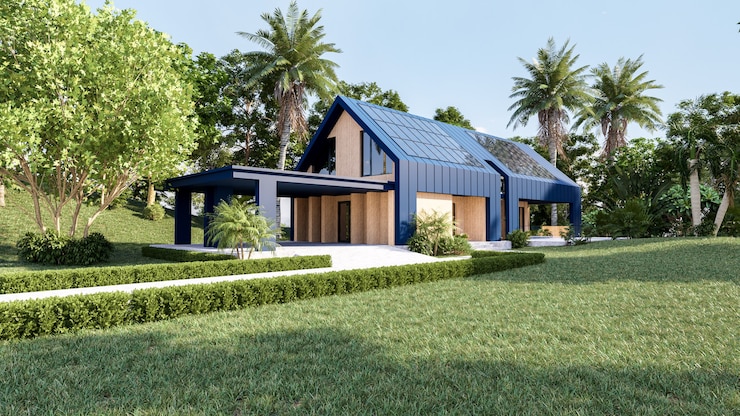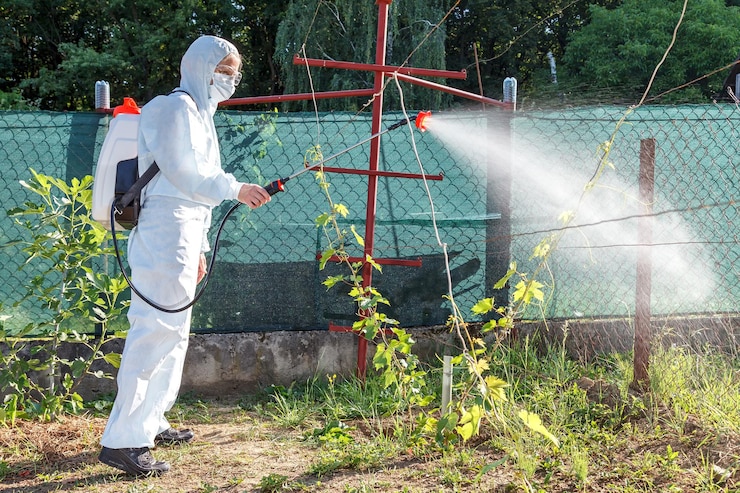4 Things To Consider Before Installing Solar Panels On Your Roof

As people become more conscious of their environmental impact and traditional electricity sources become more expensive, solar energy systems continue to grow in popularity.
After all, who wouldn’t want to take advantage of free, sustainable energy from the sun?
That said, while more and more rooftops are adorned with solar panels, installing a solar energy system is a major project that requires thorough planning.
Don’t worry, though, because this article will share some things you need to consider before installing solar panels so you can reap its benefits! Read on…
4 Important Considerations For Installing Solar Panels
1. Cost

Solar panels can help save money on your electricity bill, yet you must shoulder initial costs.
You must know the running price of solar energy systems in your area before buying them. You can do a simple online search to get a rough idea of the different solar energy systems pricing by location. You can also consult reputable solar system installers and ask for quotations.
In general, you can expect to pay between USD$3,400 and USD$5,500. It’s a hefty investment so you need to consider if you can pay it outright or if you’ll need to finance the purchase and hiring of an expert for installation.
Aside from installation, you must also consider the potential maintenance over time.
2. Roof Suitability For Solar Panels

Aside from price, you must also consider your roof’s state before installing solar panels. Because of the weight of solar panels, you have to check the following to determine if your roof can accommodate any installation.
I. Condition
If you have an old roof that needs to be replaced soon or if a part of your roof is missing shingles or damaged from a recent storm, then it may not be a good idea to install solar panels yet. You need to repair or replace your roofing first to prevent issues in the future.
II. Direction
Solar panels should face a specific direction to generate the maximum amount of solar power.
Professionals recommend that a large north-facing roof can provide maximum solar output because the panels directly face the sun.
If this is not possible with your roof, east and west directions also work well.
III. Location
The more sunlight your solar panel gets, the better it will be for your household. Hence, ensure you consider the location of your home.
While most locations get enough sun all year round, some tend to have cloudy, cool weather with less sunshine.
In addition, even if you live in the sunniest place on Earth, if your house is next to a skyscraper, then the shadow created by the neighboring building can block sunlight from your panels.
Thus, you might need to think twice before purchasing a solar energy system. For homes with lush vegetation and trees, you need to trim or cut trees that cast shade on your solar panels.
3. Type Of Solar Panel

The two most popular ones are photovoltaic solar panels and solar thermal panels.
Photovoltaic panels are more common than the other. It uses solar cells to convert solar power into electricity.
Meanwhile, solar thermal panels use a mirror to concentrate solar power and are used for water heating. Photovoltaic panels are longer-lasting and more versatile, while solar thermal is more efficient.
The type of solar panel you choose will also depend on several factors, including durability, performance, and warranty. Thus, ensure you do your homework to get the best information before deciding to purchase.
4. Tax Rebates And Subsidies

The particulars will depend on your location; however, you can get tax rebates to reward you for your sustainability efforts.
Besides, the federal government also offers tax credits to residents, so check if you’re eligible for that. You can also check your local utility if they offer feed-in tariffs or net metering where you can sell any excess solar electricity produced to electric utilities operating the grid.
Seasonal Energy Shifts
Solar energy production varies with seasons due to changes in sunlight availability. Understand that energy output may be lower during winter months or cloudy weather.
Install an appropriately sized system that accounts for these fluctuations or pair the system with a battery to balance seasonal variations.
Being aware of this helps set realistic expectations for your system’s performance and ensures year-round energy reliability.
Professional Installation against DIY
While the installation of solar panels yourself can save you money, it takes a lot of technical skills and may lead to warranty nullification and an improperly installed system.
Hiring pros guarantees proper installation, precautions, and meeting regulatory requirements. Reliable installers warrant the performance of their services and will facilitate the smooth processing of permits.
Look carefully at your level of skill and the system’s complexity when deciding whether to employ professional installers or take a DIY approach.
Lifespan and Durability
Solar panels typically last 25-30 years, with minimal degradation over time. Evaluate the materials used in panel construction and their resistance to harsh weather conditions like hail, snow, or high winds.
Look for certifications such as IEC or UL standards that indicate durability. Investing in robust panels ensures long-term reliability and maximizes your return on investment by reducing replacement costs.
Grid Connectivity
If you are going to connect your solar with the grid, find out about the grid compatibility requirements in your area. Ensure your system meets the local standard for safe interconnection.
Understand the terms of net metering or feed-in tariffs offered by your utility company; these can affect your savings. Being knowledgeable about connectivity to the grid ensures a seamless integration of your solar energy into this system.
Insurance Requirements
Adding solar panels to your home may affect your homeowner’s insurance policy. Inform your insurer about the installation to update your coverage. Some policies automatically include solar panels, while others require additional riders.
Check whether your insurer covers potential damage or theft of the solar system. Proper insurance safeguards your investment and provides peace of mind in case of unforeseen events.
System Monitoring and Management
Install a solar monitoring system to track energy production and detect issues promptly. Monitoring systems provide real-time data on your panels’ performance, helping you identify inefficiencies or malfunctions.
Many systems offer smartphone apps for convenient tracking. Staying informed about your system’s output ensures optimal operation and allows you to address problems before they escalate.
Resale Value Impact
Solar panels can increase your home’s resale value, as buyers often value energy-efficient properties.
Research local real estate trends to understand how solar installations impact property prices in your area. Highlight the energy savings and sustainability benefits of your system when selling your home.
Investing in solar energy is a long-term decision that can yield financial and environmental rewards, including enhanced property value.
Environment Effects
While solar panels do not harm the environment, manufacturing and their disposal also have environmental effects.
Do your research into manufacturers that follow more sustainable practices and also offer recycling programs for decommissioned panels. You can help minimize the ecological footprint of your solar energy system even further with responsibly made products.
Shading Analysis
Perform a shading analysis to identify potential obstructions like trees, chimneys, or nearby buildings that may reduce your panels’ efficiency. Use tools like solar pathfinders or consult professionals for accurate assessments.
Address shading issues by trimming trees or adjusting panel placement. Optimizing sunlight exposure ensures your system operates at peak efficiency and maximizes energy production.
Expansion Possibilities
Then, plan for the future use of energy by considering whether the solar system can be expanded further, perhaps by adding panels or other component upgrades like inverters.
With an expandable system, it would never be hard to adapt to changes, like buying an electric vehicle or a few more appliances.
Installation Schedule
These range from design considerations and permitting all the way to final installation. The whole process may take several weeks to months to be completed, depending on such factors as installer availability and local regulations.
Thus, it pays to plan ahead to avoid unexpected delays, assuming you want to install it before a particular season or event.
Community Solar Programs
If it’s not possible to put solar panels on your property, look into shared solar programs. You can buy or lease a share in a solar farm and earn credits on your utility bill. Community solar is an excellent alternative for renters, condo owners, or those with unsuitable roofs.
Decommissioning and Recycling
Plan for the decommissioning of your solar panels at a later stage. Research manufacturers or organizations that may offer recycling services for your old/damaged panels.
Proper recycling ensures that valuable materials like silicon and aluminum get reused, minimizing waste. Preparing for this early on promotes sustainability even after your system’s lifespan ends.
Takeaway
Solar energy is an excellent investment if you’d like to cut your electricity bills while doing your part for the environment.
Therefore, installing solar panels is never straightforward as you might think. There’s a lot to consider, from the initial cost to potential tax benefits.
The sooner you handle the above considerations discussed here, the sooner you can start taking advantage of the numerous benefits of solar energy.
Additional:











Leave A Reply